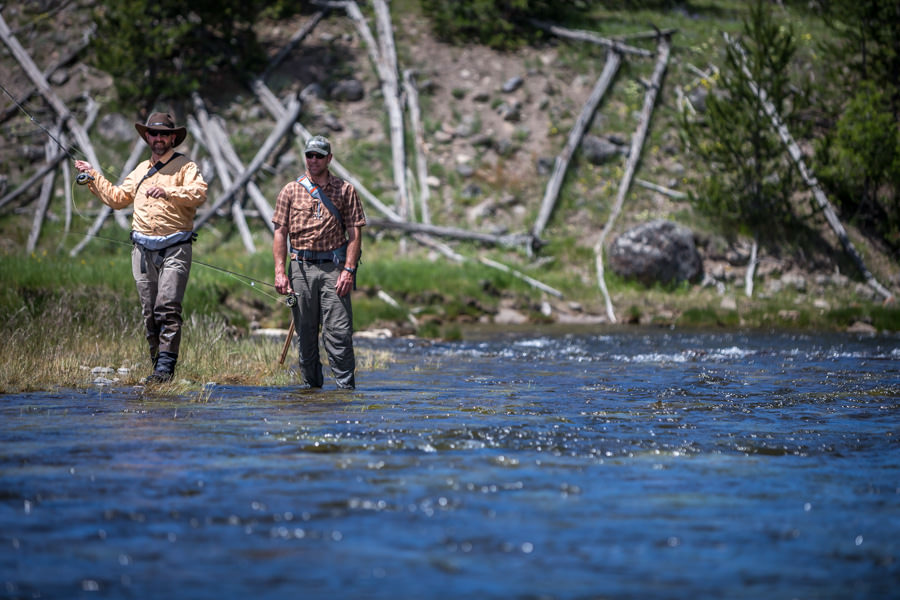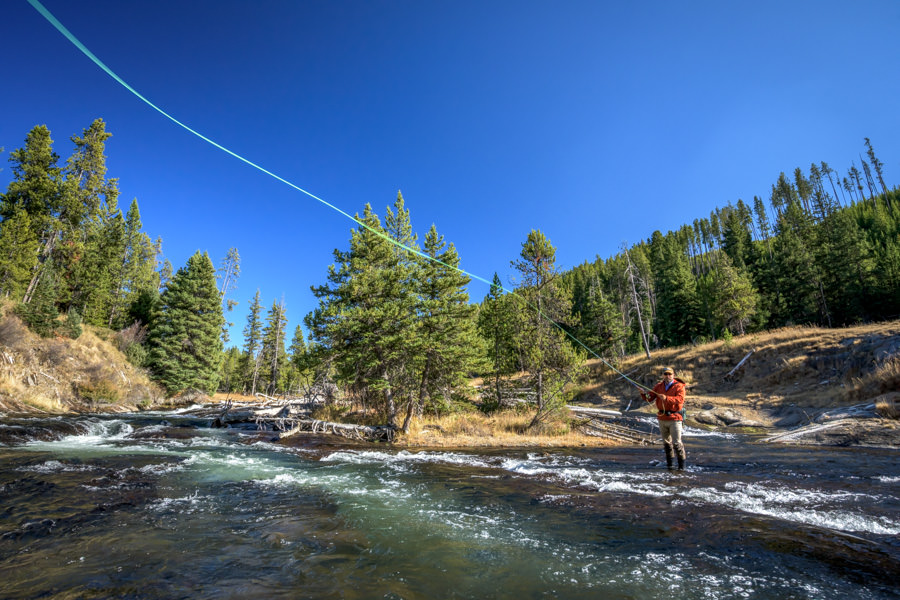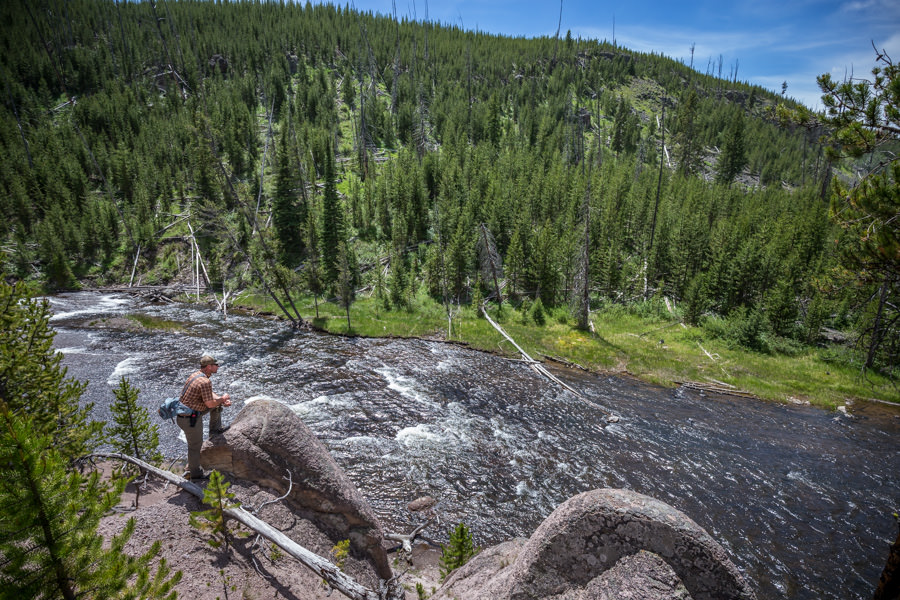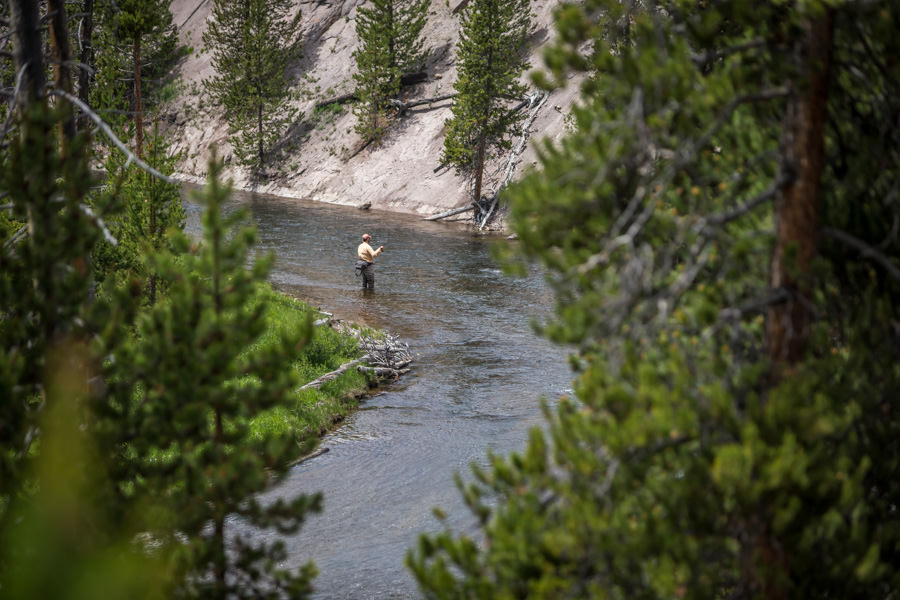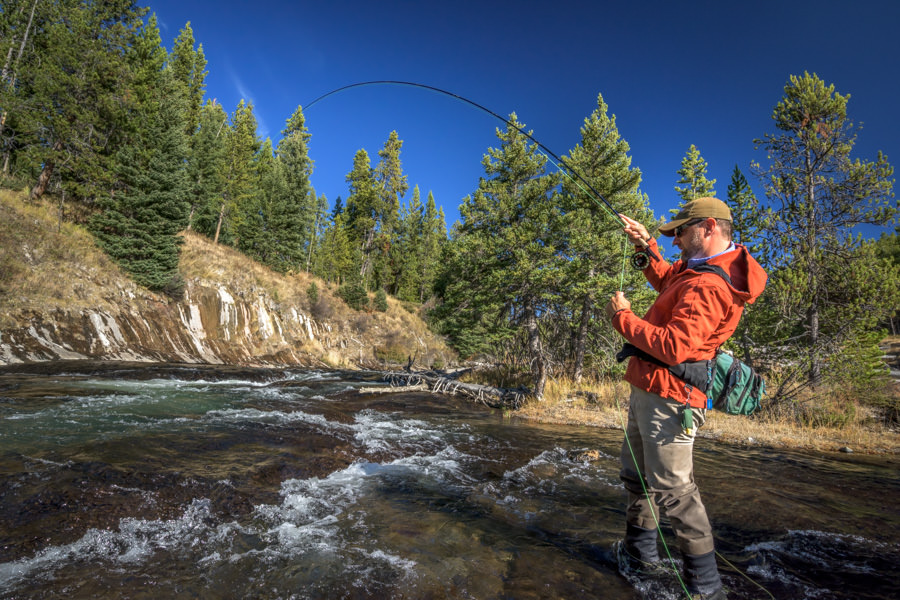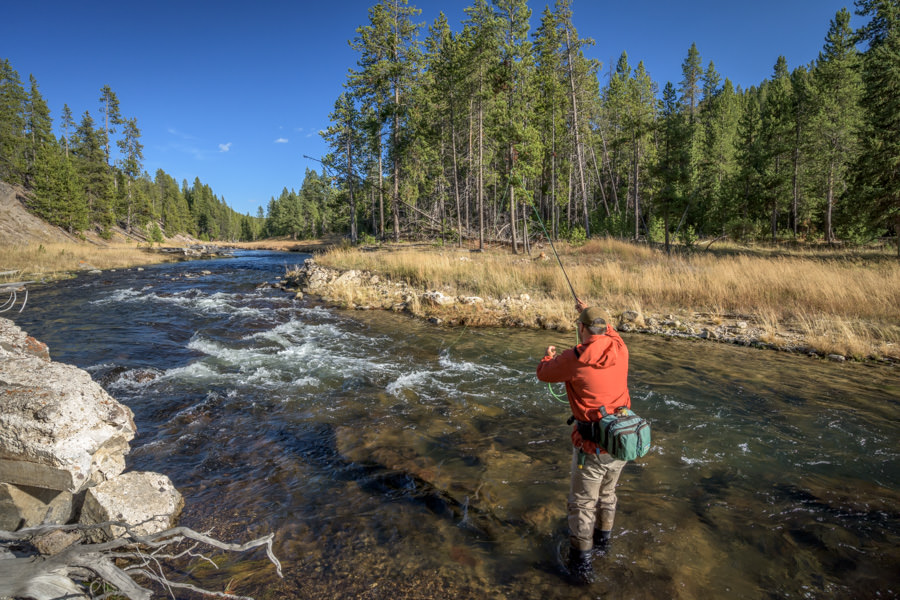One of the major sources of the world famous Madison River, the Gibbon is a good fishery in its own right. Originally fishless above Gibbon Falls, stocking in the early 1900’s gives the angler the chance to target Browns, Rainbows, Brookies, and even Grayling in a few spots. In the fall of 2017 the park service has begun a program to replace non-native species with westslope cutthroat above the Virginia Cascades. The Gibbon rises in Grebe Lake, and several major waterfalls along its course divides the fishery and isolates distinct fish populations. Much of best water when fly-fishing the Gibbon River is easily accessed from the road, although hike in options exist, especially after the park service re-routed the Grand Loop Road out of Gibbon Canyon in 2009. It’s tough to give a general overview of fishing on the Gibbon, as the prime seasons, tactics, and expected quarry vary wildly on different sections of the river. The good news is that the Gibbon offers something for anglers of every skill level, from rank beginner to seasoned veteran.
Fly-Fishing the Gibbon River- Grebe Lake to Little Gibbon Falls
The Gibbon is rarely fished in this stretch, as it is pretty far from the road in tough country that is known for its Grizzly Bear population. Grebe Lake, however, is a popular fishing destination.
The Upper Gibbon is currently undergoing a project to eradicate non-native species such as rainbow and brook trout with the eventual goal to introduce west slope cutthroat trout. This project is limited to the headwaters of the Gibbon downstream to Virginia Cascades. While this program is underway we recommend focusing fishing efforts below Virginia cascades
Fishing the Gibbon River - Little Gibbon Falls to Virginia Cascades
Below the falls, Rainbow Trout all but disappear and Brook Trout show up in big numbers. This reach of the river is also part of the program to introduce west slope cutthroat trout while non-native trout species are eradicated and we recommend focusing on the lower river. The efforts in the headwaters do not impact fish populations or fishing below Virginia Cascades.
Fishing the Gibbon River - Virginia Cascades to Norris
Below the cascades, Brook Trout still dominate the Gibbon, but Brown Trout start to show up along with an occasional Grayling. The Brook Trout are still small, but the Browns range a bit larger. A fish over 11 or 12” would be a trophy, however. This is still attractor dry fly water, and a very forgiving place for kids or newbies to fish. This water will fish best in July and August, and will see a good amount of pressure from campers right around Norris campground, but overall pressure is light.
Fishing the Gibbon River - Norris to Gibbon Meadows
The Gibbon changes character drastically in this stretch. Below Norris, Brown Trout become the predominate fish, and the stream is dominated by two large meadows. The stream grows up to 30’ wide here and resembles a spring creek. The flat, slow runs and spooky Browns make this a very challenging environment, as difficult as anywhere in Yellowstone Park. The Browns run anywhere from 8” to 20” here, with the occasional small Brook Trout. Matching the hatch is critical in the meadows, and fishing can be extremely difficult if no hatch is occurring. Fishing is best here from about the second week of June to the first week of July, as Norris Hot Springs warms this stretch during the summer. Look for hatches of Brown and Green Drakes as well as Pale Morning Duns. The Green Drakes and PMD’s hatch primarily from mid morning until just after lunch, with Brown Drakes hatching in the evening. Absent a hatch, you can prospect with a small terrestrial. Choose a long, light 5x leader here.
Fishing the Gibbon River - Gibbon Meadows to Gibbon Falls
This is the upper half of the Gibbon Canyon, and is much more forgiving water than the meadows. This stretch used to be roadside, but the road was re-routed in 2009, forcing anglers to hike in from either end. Brown Trout are found here, with most fish in the 6”-12” range. This is again attractor dry country, and the fish typically respond well in the pocket-water environment. The main draw of this stretch is it is one of the first spots in the region where you can toss attractor dries, as early as the first or second week of June. Warm water slows fishing in midsummer, but there is a nice window of 3-4 weeks of good fishing. Choose flies that mimic a smaller stonefly or larger caddis, the most numerous bugs on this stretch.
Fishing the Gibbon River - Gibbon Falls to Mouth
Most of this stretch is still canyon water, although there is a decent sized meadow just upstream from the Madison Junction, where the Gibbon meets the Firehole to form the Madison. Most of this 5 mile stretch is visible from the road and the river runs 20’ to 30’ wide. Fishing is available for resident trout from late May to early July, with migrants from Hebgen Lake arriving in October.
The lower Gibbon is often fishable with nymphs on opening day, with dry fly fishing kicking in closer to the middle of June. Resident fish run 6-14” on average, but are not nearly as numerous as on the Firehole. Choose stonefly nymphs with a small caddis dropper if you are going subsurface, and general attractors or terrestrials if you are fishing dries. Hoppers, ants, and beetles are especially important in the meadow, with attractors being more useful in the canyon water.
In the fall, large (16”-20”) Browns and Rainbows from Hebgen Lake show up in this section of the Gibbon. While the fish are far less numerous than in the Madison, the crowds pursuing these brutes are far smaller as well. Nymphing or streamer fishing is best during the fall. I like a stonefly trailed by a baetis nymph if I am going to fish under an indicator. Streamer patterns vary, as you are trying to illicit an aggressive response from the fish more so than matching any specific baitfish. The Gibbon lacks the many long, deep holes found on the Madison, so the hiding spots for the lake fish tend to be more subtle and harder to spot. Just remember that these fish are used a to a lake environment and do not want to fight the current any more than they have to.





